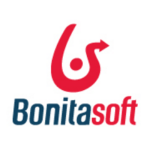What is our primary use case?
We use BPM in order to process the entire data flow between our different applications to enable the data steward to take actions on some of the data quality issues.
It was implemented last year. We have been in production a couple of months now. We have a team of data stewards who look at different data to determine and enable our master data management within the bank.
We implemented a couple of different workflows targeted towards different actions. For example, we have an MDM, the master data management platform. We have different clients' profiles coming in from different sources. So, sometimes we will get duplicates, and sometimes we get suspect duplicates. We implemented those workflows to trigger different actions, so the data steward can fix the data or take a human action to move the process forward.
IBM BPM is integrated into the master data management platform, so the MDM advanced edition. They are coupled together right now.
How has it helped my organization?
It has brought huge benefits to our organization. In the past, we had some automated processes which were hard to implement along with all the business processes that went with it. We have been able to marry these two things, automating and taking actions on data issues quickly.
What is most valuable?
Automating the whole workflow process to give our data steward the ability to take actions rapidly, and making sure we have all the data synced within the different platforms that we are using.
What needs improvement?
We are still discovering the potential of the solution, so we are not at this stage yet. There is a lot still to discover and implement. Maybe in a couple of months or next year, we will be able to see what exactly our needs are. Maybe it will be some functionality that the current software does not offer, but we are not at this stage yet.
For how long have I used the solution?
Less than one year.
What do I think about the stability of the solution?
We still have a couple of issues that we are working on right now. Mostly on the configuration side of the tool, and it has been about a month that we have been working to stabilize the platform.
What do I think about the scalability of the solution?
It is not relevant for IBM BPM.
How is customer service and technical support?
We are in contact with IBM technical support and labs. We deal with external firms, who develop a couple of workflows that we use. We are trying right now to solve the stability issues.
How was the initial setup?
We have a team who worked initially on defining the solutions, getting the business needs, and getting all the technical documentation for it to be implemented. I personally managed the development team to develop these workflows and put them into production.
It was not hard to set up. It was more tweaking and optimization going forward, but the initial setup was not an issue.
With these workflows, there are people like the data steward who work on them, so it is not really initiating new workflows. There were workflows that already existed, but maybe in an old fashioned way.
This tool fits within the data strategy at the bank. It was part of our roadmap that we worked on for the last couple of years. It was at the right time. It was for the right context as you need a sponsorship from the business and from the Chief Data Officer, so all those things came together to move forward with BPM, MDM, and different platforms.
What about the implementation team?
It was a combination of an IBM partner and IBM support. We have an IBM partner, who works with us to develop and implement the tool. We work with IBM support too for the whole configuration and the infrastructure side of it.
What was our ROI?
It is an automated optimized way to ensure the quality of our data and staying synced to our old platform.
Which other solutions did I evaluate?
At the bank, we have several tools from IBM, so it came up as part of a bundle/package.
What other advice do I have?
The interesting part is the integration of this tool within other IBM tools. It makes it easier to implement and maintain later on. I would definitely recommend it from this point of view.
Disclosure: I am a real user, and this review is based on my own experience and opinions.




















The new spark based bpmui is really powerful as compared to previous version. It reduces approx one third time of UI development effort. It provides lot of flexibility to implement the features those were difficult to achieve or time consuming activity.